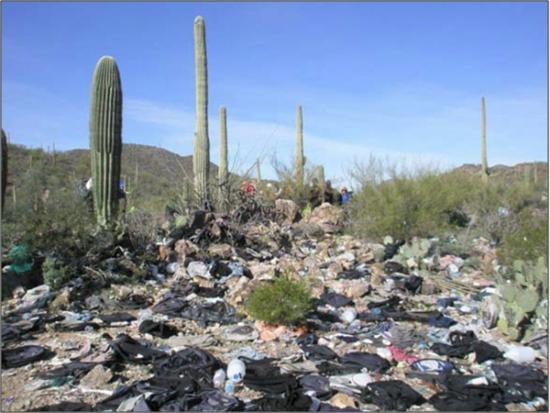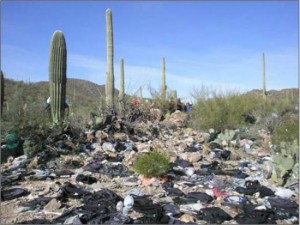On the Environment and the Drug War

The “War on Drugs” and specifically the “Mexican Drug War” are not new themes to readers following news stories. But two recent stories revisit and highlight another way in which the “Drug War” affects Latinos, particularly in relation to conservation and the environment.
First, there is a Washington Post story about a Mexican environmental activist, Juventina Villa Mojica, murdered by drug traffickers. As the story notes:
“Drug gangs began targeting Villa, her husband and their extended family after they refused to allow drug traffickers to cut down trees near their village, according to Manuel Olivares, a human rights activist. ‘It’s a virgin area with rich forest areas, and the main interest of drug traffickers is cutting down the trees so that once it is deforested they can expand their drug fields,’ Olivares said.”
There was also this High Country News story revisiting the ongoing issue of the US-Mexico border and drug trafficking as a conservation and recreational concern. The story notes how Bureau of Land Management (BLM) agents routinely “find trash bags of marijuana stashed beneath mesquite and paloverde trees, piles of muddy, discarded clothes and Dumpsters-worth of empty water bottles, painted black to make them less visible in the sun.”
In addition, the BLM “placed signs outside Sonoran Desert National Monument warning visitors to stay away from abandoned cars and backpacks, and informing them they may encounter criminals and smuggling vehicles speeding through the desert”, as well as “discouraging visitors from going to the southern portion of the monument, a popular rendezvous for drug smugglers and people hiking marijuana up from the border.”
The bigger story of how the War on Drugs affects the environment is not necessarily new. The effect of the “War on Drugs” on the environment occurs on a global scale, regionally across Latin America or in country-specific cases like Colombia. But it is important to follow this issue close to home with “our” “Drug War” and note how it affects Latinos—especially given how this was a big election year for US and Mexican elections, and what that means for shared issues of immigration and drug trafficking.
The Washington Post story points out how despite the many other issues and challenges Latinos face, the environment still matters, in the US and in Mexico—to the point of standing up with ones’ life. Although a tragic story, the story of Villa provides a clear example of the many heroes fighting for environmental and conservation issues—stories and issues that can easily take a back seat to a focus on other social and economic impacts of the “Drug War”.
The High Country News story can provide an example relating to the framing of Latinos. Latinos already carry negative connotations in several issues—being seen as responsible for negative ecological impact and curtailing access in public lands should not be added to the list. This is important given a certain lack of diversity in the use of public lands and a need to increase Latino participation in public lands. We need the association between Latinos and public lands to have more positive framing, rather than serving as examples of adverse effects on the conservation and ecological health of public lands—as well as reasons to limit public access. The challenge lies in needing to report and address these conservation issues in relation to issues like immigration and drug trafficking.
As we see how the “Drug War” changes with a new administration in Mexico, and how immigration is handled in the US, it will be interesting to see what associated environmental issues arise, how they will be reported, and the role Latinos play in such issues, positive or negative.


